2017 : Greater Noida, Chennai, Pondicherry, and Kanchipuram with VIGYANshaala
The VIGYANshaala is a nascent outreach team founded by four bright Indian research scholars abroad, namely Darshana Joshi (University of Cambridge, UK), Aditya Sadhanla (University of Cambridge, UK), Shruti Sharma (University of Stony Brook, USA), Vijay Venugopalan (Italian Institute of Technology, Italy), who organized India-wide outreach workshops, targeting students at schools with diverse background and providing an opportunity to be aware of the fact It's a materials world , i.e. the world is moving towards materials based applications, from electronics to medicines, particularly using polymers and organic materials such as DNA. Polymers promise alternatives to conventional fossil-fuel based energy (eg. polymer solar cells are print). Being a common friend to them, I got invited to their workshop in Jagshanti Udayan Ghar, Greater Noida, a home for orphan and abandoned children, run by the Udayan Care charitable trust. Then IMSc and VIGYANshaala jointly organized tell your research in 3-minutes events in IMSc and IIT-Madras. There VIGYANshaala also demonstratively presented the world of polymers and organics as a new paradigm of scientific research and promises and scopes for the young researchers into this field.
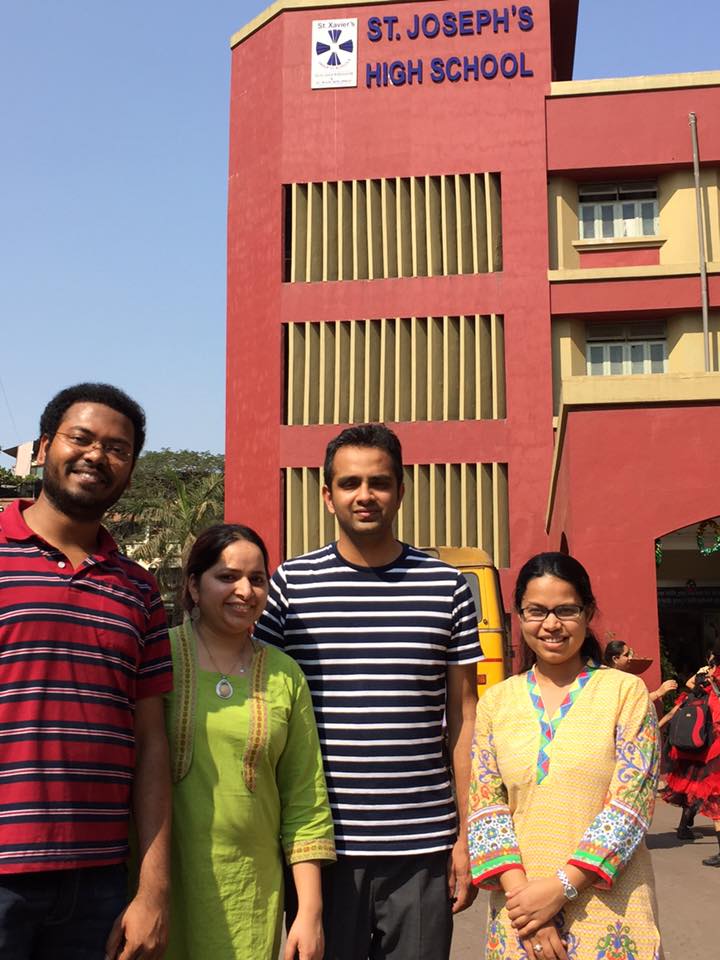
Like the one happened in Greater Noida, VIGYANshaala+IMSc programmed workshops in several schools in Chennai and its outskirts [ SBOA School, Anna Nagar and Chennai High School, Kottur in Chennai, Peery Matriculation High School and Rettamangalam Secondary High school in Kanchipuram, and Amalorpavam Higher Secondary School in Pondicherry]. The key-organizers from IMSc were Prof. R. Ramanujam, Prof. Gautam Menon, and Varuni Prabhakar (Outreach Coordinator, IMSc). In each of these workshops, how to extract DNA from fruits had been practically taught by providing necessary equipment and ingredients to the students (salt, liquid soap, ethanol, test-tubes for mixing solutions, and bananas/tomatoes). Darshana and Shruti talked about application of polymers in biological systems, Aditya showed the importance of polymers for conducting devices and solar cells, Vijay showed application of LEDs and optical fibers in modern telecommunication and I talked on green energies and energy storage (batteries).
I particularly talked on why green energy is very much needed to counter-attack the global warming challenges ahead. Then I discussed what could be a wiser choice among green energy alternatives to the fossil fuels. I introduced the basic physics behind the nuclear energy by explaining Einstein's famous $E=mc^2$ equation and how the energy from a nuclear fission material promises the highest yield among the green energy competitors. However, I also made students aware of the radiation and waste management issues (I showed the students a CCTV footage capturing Fukushima nuclear disaster in 2011).
I explained the concept of solar energy as it owes to Einstein again (this time $E=h\nu$) and students should be aware of Einstein's main contribution to quantum physics and winning the Nobel prize for it. Then I raised the concern about energy storage issue for the solar and wind energy since the energy yield is low and weather depended. I explained briefly how battery works (roles of cathode, anode, electrolytes) and demonstrated how potatoes, tomatoes or soft drinks could be bona fide sources of electrolytes.
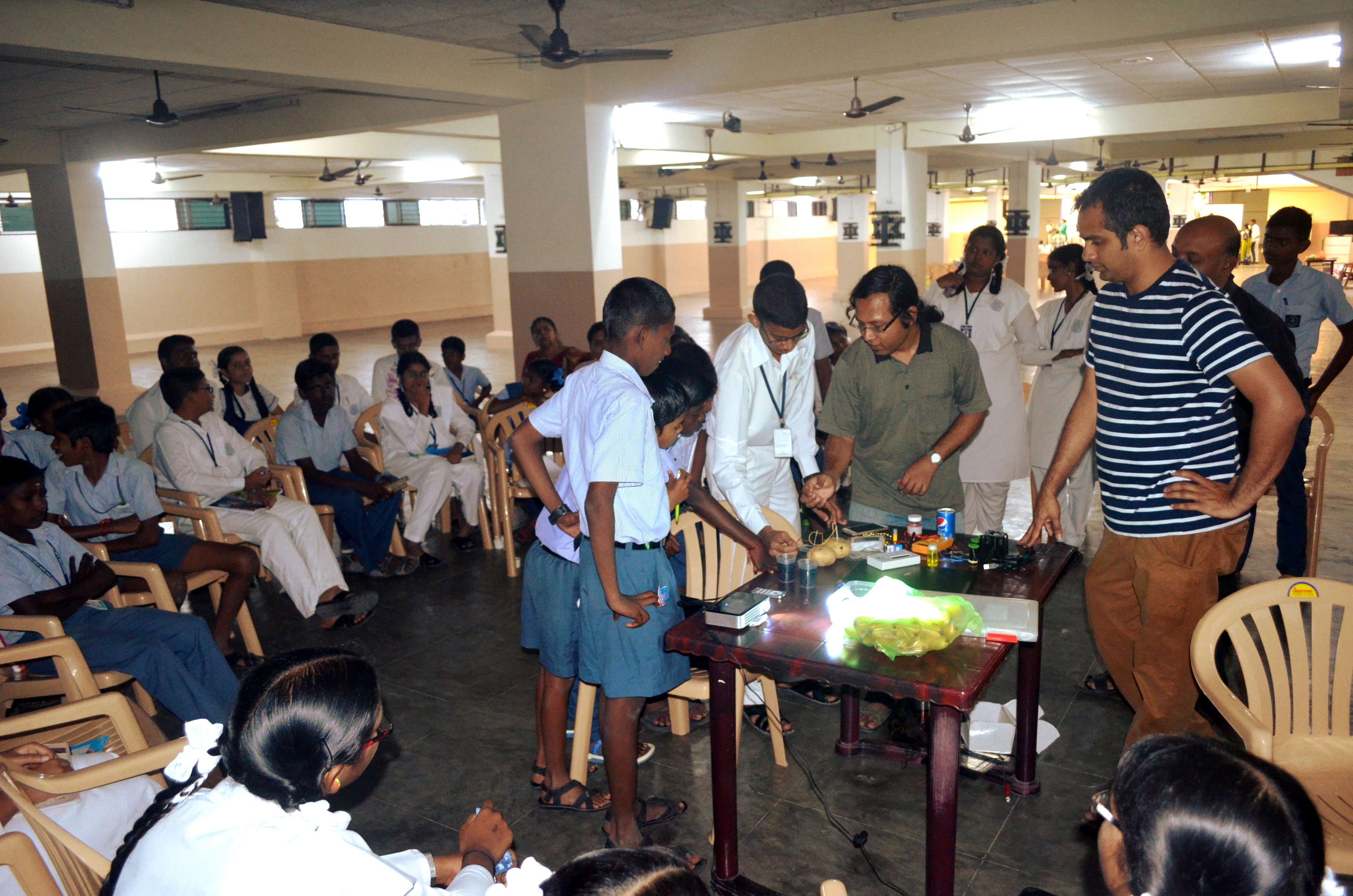
Here you can find my presentation here :- Going green : energy that matters.
Now let me share some of the VIGYANshaala moments where the VIGYANshaala members performed.
2016 : Chennai
The Indian Institute of Mathematical Sciences (IMSc)'s Outreach cell organizes Science Day or Open Day every year where the school students are invited to attend science-motivating talks by the faculties and science demonstrations by the PhD and postdoctoral researchers. In 2016, it happened on April 9, where I demonstrated a beautiful mathematical theorem called Fold and One-cut Theorem (proved by Eric Demaine, Martin Demaine, and Anna Lubiw) which states : "Given any collection of straight edges, there exists a flat folding and a line in that folding such that cutting along it results in the desired pattern of cuts."
This simply means that if we want to cut a geometric shape which is bounded by several straight lines (eg. polygons) and if we want to cut the shape from a paper, instead of applying a scissor along the lines many times, we can get the shape just in a single cut if we can cleverly fold the paper in a certain way and it is always possible for any such shapes. The key idea behind is that folding can project all the lines to a single line, which is sort of a 2D to 1D transition. For instance, in the image below the the top edge of the Trapezium that I drew on the board could be exactly merged with the bottom edge if we can fold it along the dotted line, which is the bisector of the top and bottom edges.
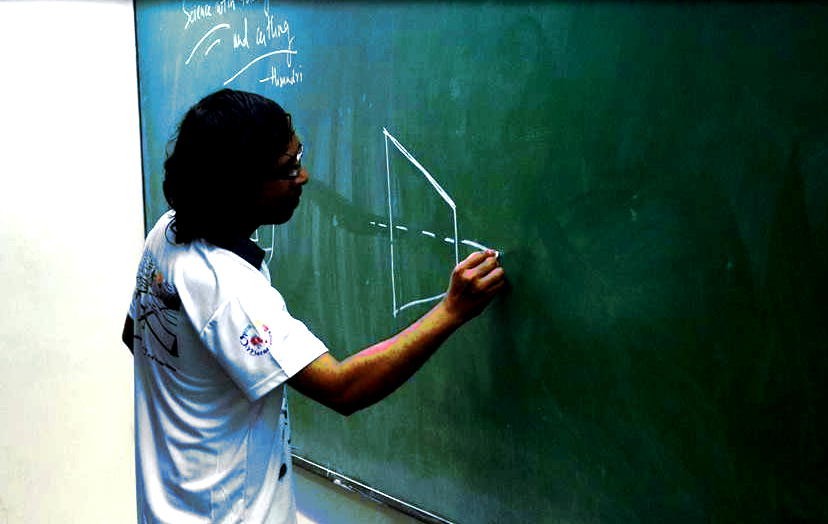
During the demonstration I drew several shapes such as rectangles, hexagons, pentagons, five-pointed stars, and triangles (A triangle is a tricky one !) on old newspapers with marker pens (newspapers because I did not want waste any new or glossy paper) and distributed them to the students and teachers in front of me. Then I shared the simple 'find the bisector' concept with them and most of them successfully got the shapes in just one-cuts. So it's a very simple, inexpensive mathematics (geometry-based) demonstration I could offer on the Science Day!
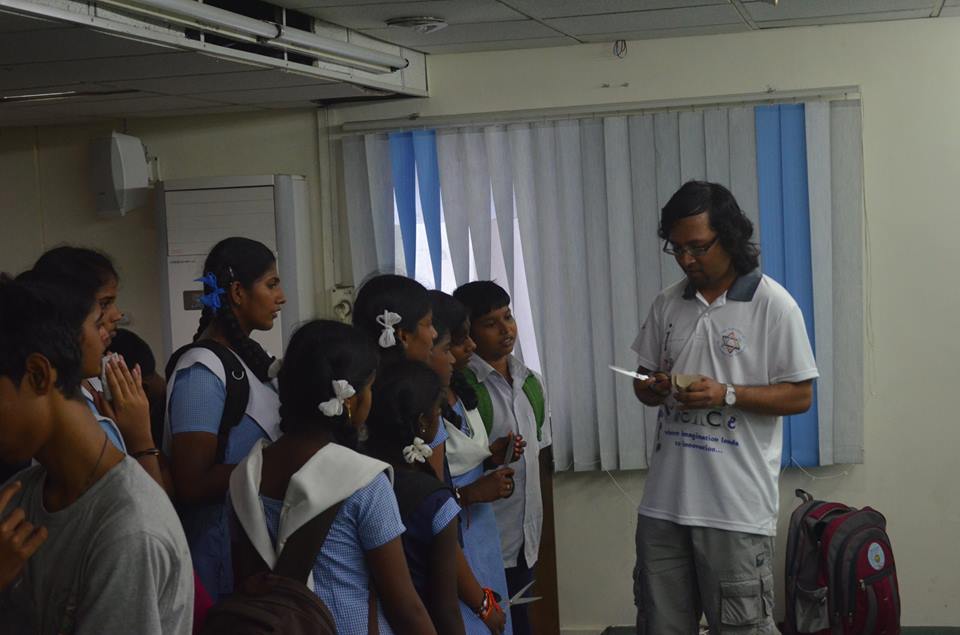
2015 : Dehradun
On April 24, 2015 I volunteered in the workshop titled Women in Science and Beyond conducted by Science Outreach India (SOI) in Shri Guru Ram Rai (PG) College, Dehradun. SOI is an. SOI is an outreach initiative by some graduate students and postdoctoral research fellows from the University of Cambridge, UK, and supported by he Schlumberger Foundation, Faculty of Future, from the same university. In the workshop several speakers shared their experiences and views on women's significant roles and social obstacles while pursuing science as a career. The panel of the speakers was carefully selected by looking at different intersections of the society : as a woman scientist (Prof. Vineeta Bal of National Institute of Immunology, Delhi), a father of woman PhD student (Prof. N. D. Haridass, TCIS, Hyderabad), a mentor who encourages aspiring women students through mental counseling, social training, and financial supports (Dr. Vikram Dutt, Udayan Care, New Delhi), a B. Tech. student (Priti Ahirwas, Graphic Era University, Dehra Dun) and Darshana Joshi as an organizer and PhD student of Cambridge University.
In the workshop I was a mediator who collected questions from the students and teachers and passed them to the panel. I also answered some of the questions which I could answer from my experiences in the scientific research world.
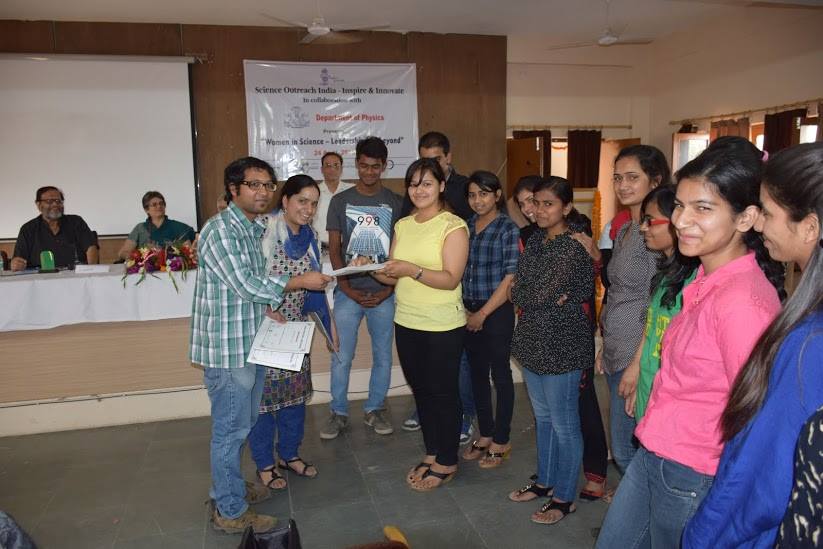
I must mention one fact that Shri Guru Ram Rai (PG) College is one such institute where I witnessed the atypical sex-ratio, i.e. women students are more in number compared to the male ones in science, and specially in a subject like physics !